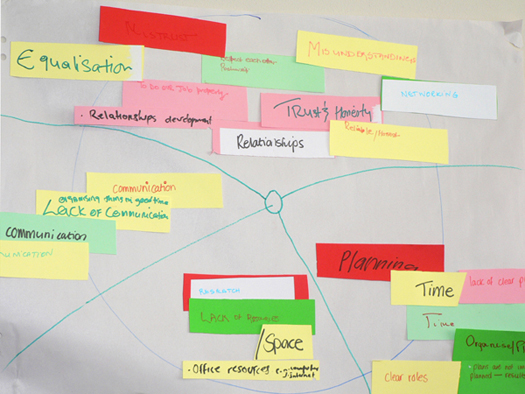
Consider strategic planning “the shelter and water” a nonprofit needs to sustain, said Ana Cortez an expert in strategic planning who helps family-serving agencies plan for the future. “We don’t know how long the journey may be,” she said, so the first step is to establish a strong framework that will carry on an organization’s mission.
On Thursday, the Center for Missing and Abducted Children’s Organizations, a membership entity that helps nonprofits reunite missing and abducted children with their families, hosted a webinar led by Cortez on strategic planning. During the presentation, Cortez discussed the planning process and what it can mean for an organization.
Many people believe it takes a lot of money and a year or more to strategically plan, but it can take much less time and not a lot of money, said Cortez. And nonprofit boards or leadership teams aren’t the only ones interested in planning, she added. The staff members on the ground, she emphasized, are the ones “who need to understand the larger goal and why things are being done a certain way.”
There are also many “pros” to strategic planning, said Cortez. It gives the organization a method to approach its work, allows it to break down big tasks and fully utilize staff, volunteers and partners. Importantly, added Cortez, it helps “spread ownership” so that everyone involved in the planning process has a stake in the organization’s focus and mission.
When outlining the basics of strategic planning, Cortez suggested nonprofits consider the following steps:
-
Think about the organization’s business and assess what it needs versus what staff members want. Planning efforts, she said, should focus on a few critical areas of organizational need.
-
Select a person to spearhead the effort.
-
Identify someone outside the organization, who has no agenda, is assertive and responsive, to facilitate the process.
-
Develop a planning timeline.
-
Conduct an analysis of the organization’s strengths, weaknesses, opportunities and threats. Referred to as a “SWOT analysis,” an outside individual should interview staff, volunteers and outside partners about the strengths and weakness of the organization.
-
Hold a strategic planning meeting or retreat to discuss the findings of the SWOT analysis and build a logic model, which will help the organization identify its long- and short- term goals, as well as what organizational inputs are necessary to reach desired outcomes.
Many of the organizations listening to the webinar were local nonprofits that search for children who have been abducted or are missing, noted Cortez. They are in a crisis-oriented business, she acknowledged, so taking time to strategically plan can be difficult. But, every nonprofit needs the organizational foundation to sustain its business of helping children and families, she said. Strategic planning will help do that, she added.
Photo credit: Development Works Photos / Flikr































